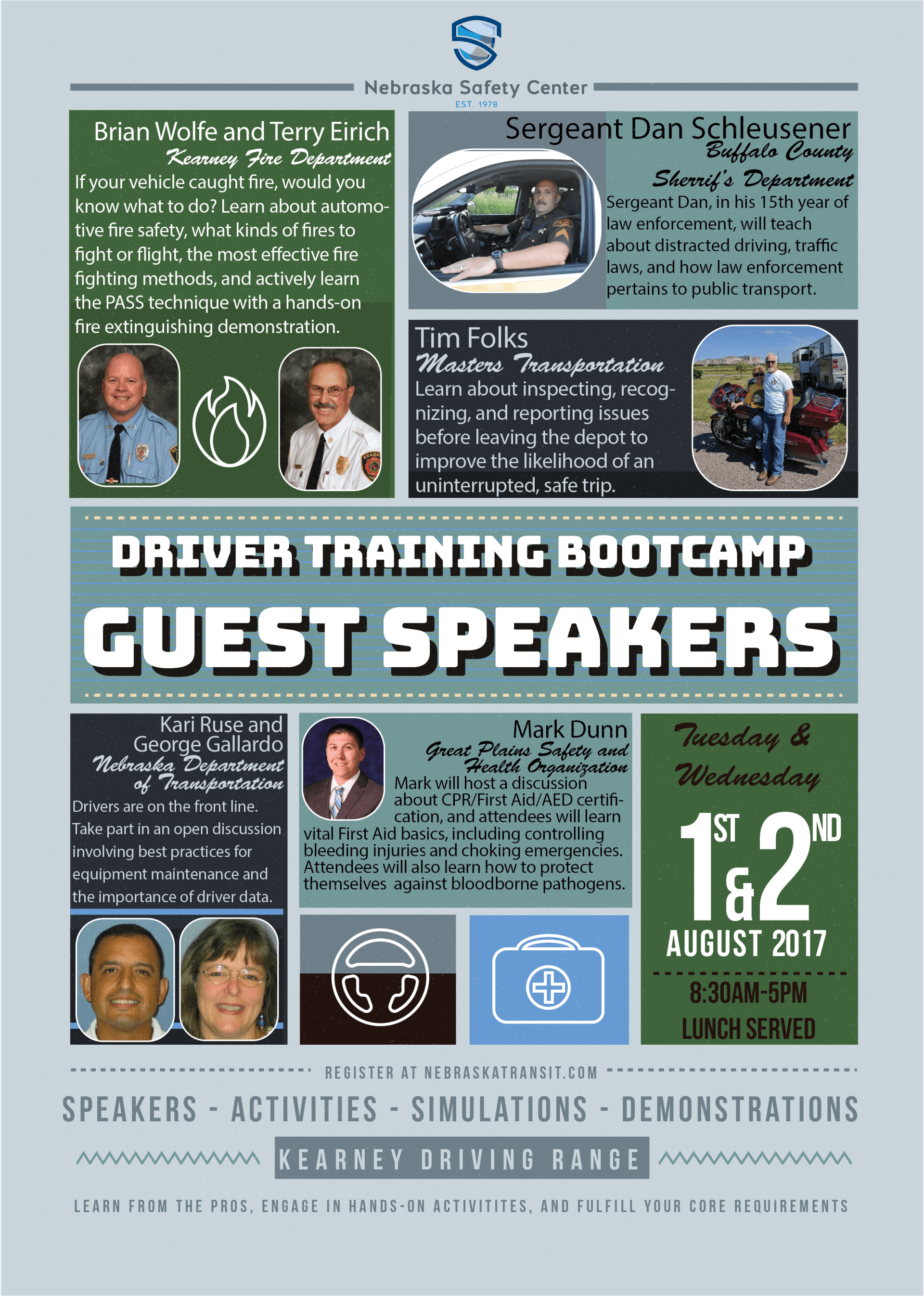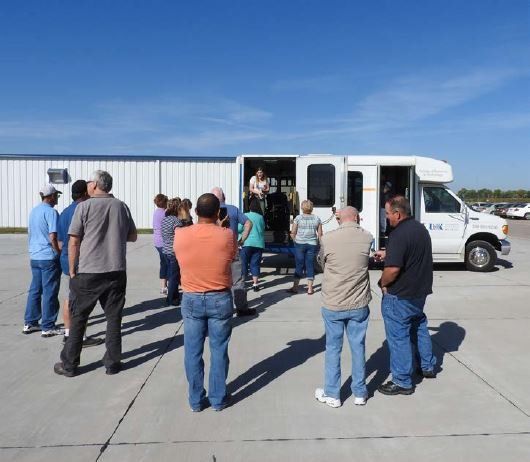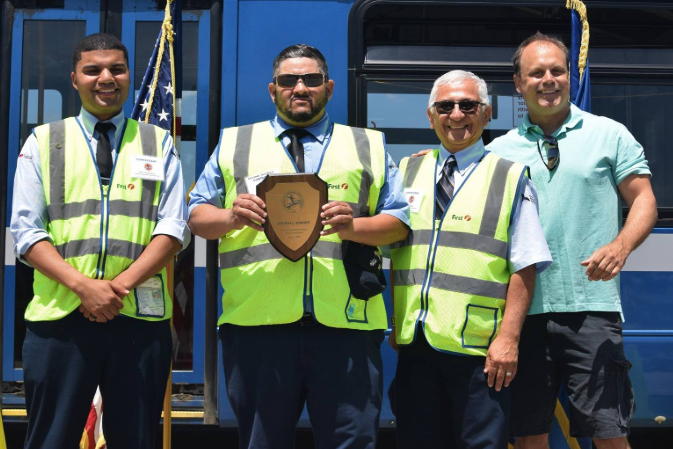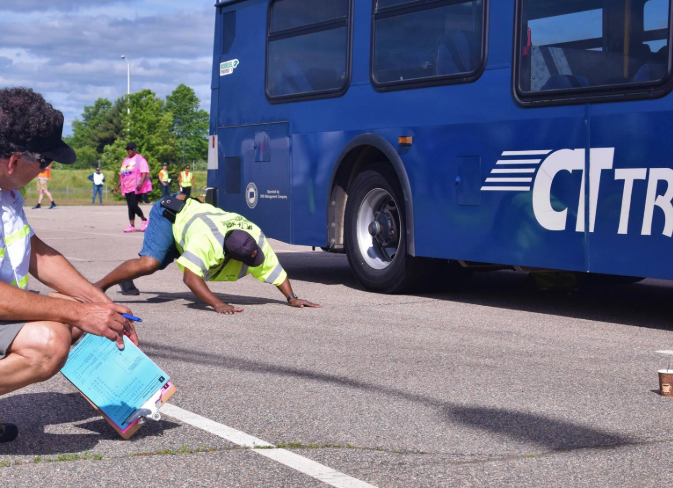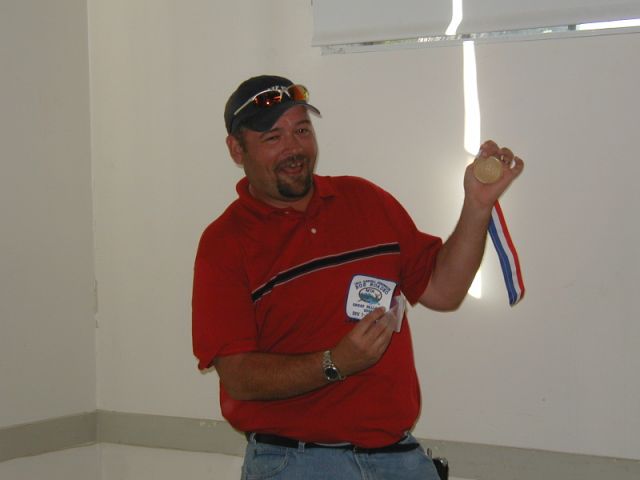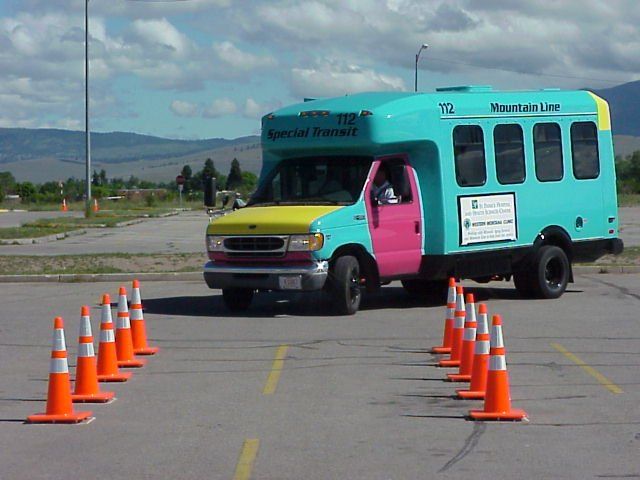In Nebraska, free rural transit driver training is available for eligible drivers hired by a Nebraska transit agency receiving Section 5310 or 5311 funding from the Nebraska Department of Transportation (NDOT). NDOT has been providing driver training for years, but their first official Driver Training Bootcamp began in 2017. There is no cost to the participants, as Nebraska’s State RTAP funds are used to cover the training and reimbursable travel expenses. The Nebraska Safety Center, NDOT, and University of Nebraska co-sponsor these well-attended Driver Training Bootcamps on a quarterly basis. This action-packed two-day training event covers topics including Passenger Assistance Safety and Sensitivity (PASS), Defensive Driving, Title VI, ADA, first aid, and more! PASS includes hands-on training on wheelchair securement and lift operation. The University of Nebraska donates a dedicated vehicle for the two days. There is no exam, but there is certainly a lot of learning!
Participants have the option of taking both days or just one. The Bootcamp satisfies core and annual refresher requirements. Optional electives, which are offered in addition to the Bootcamp, include American Heart Association (AHA) Heartsaver training, which teach students to provide first aid, cardio-pulmonary resuscitation (CPR), and defibrillation (using an automated external defibrillator, or (AED) in a safe, timely, and effective manner. These trainings feature group interaction and hands-on coaching from an AHA instructor. Other offerings include everything from hands-on fire extinguishing (with an actual fire created by local firefighters) to distracted driving to equipment maintenance. High-tech simulators give participants the experience of driving through an ice storm, and the machine scores them on their performance. There are even small go-cart-like vehicles called Simulated Impaired Driving Experience (SIDNE) programmed to drive as if the operators are under the influence of alcohol or drugs. Drivers have to try to maneuver these through cones and other obstacles and learn first-hand what drunk driving feels like.

